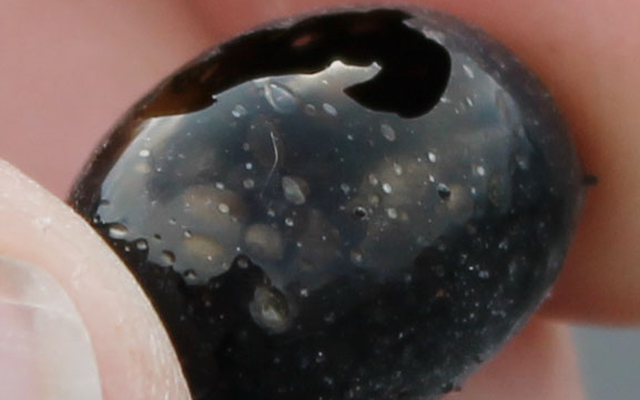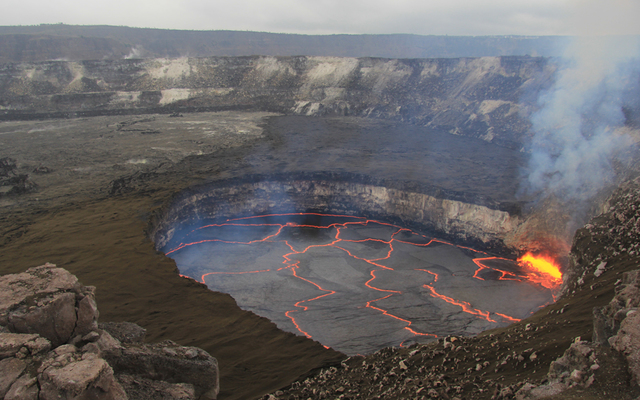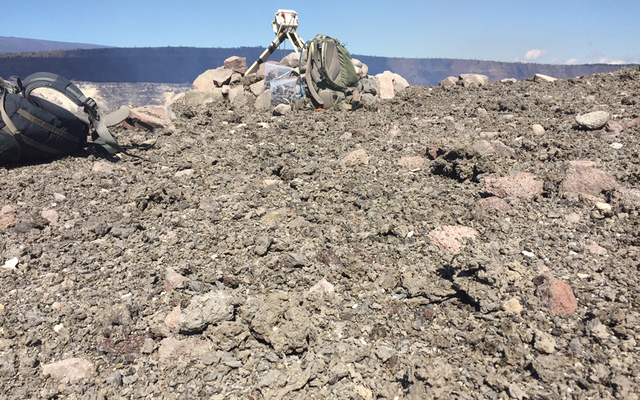‘Coolest’ lava rock found at Kilauea


USGS / HAWAIIAN VOLCANO OBSERVATORY
This hollow volcanic rock is about a half-inch long and was found on the rim of Halemaumau Crater after a rockfall and explosion ejected particles to the rim Friday.

USGS/HAWAIIAN VOLCANO OBSERVATORY
A rockfall on the east rim of the summit vent within Kīlauea Volcano’s Halemaumau Crater triggered a small explosive event at 3:51 a.m.on Jan. 8. Explosive events like this occur more frequently when the lava lake level is relatively high, as it has been in the last week — about 100 to 115 feet below the vent rim.

USGS/HAWAIIAN VOLCANO OBSERVATORY
The lava lake in Halemaumau Crater was at a relatively high level, about 114 feet below the crater floor, on Jan. 7, the day before a section of rock fell in to the lake and caused an explosion.

USGS / HAWAIIAN VOLCANO OBSERVATORY
The rim of Halemaumu Crater was covered in a nearly continuous blanket of lava fragments following an early morning rockfall and explosion on Jan. 8. Two backpacks (in background), which belong to HVO scientists who briefly entered the area to collect samples, provide scale for the fragments hurled onto the crater rim.






Select an option below to continue reading this premium story.
Already a Honolulu Star-Advertiser subscriber? Log in now to continue reading.